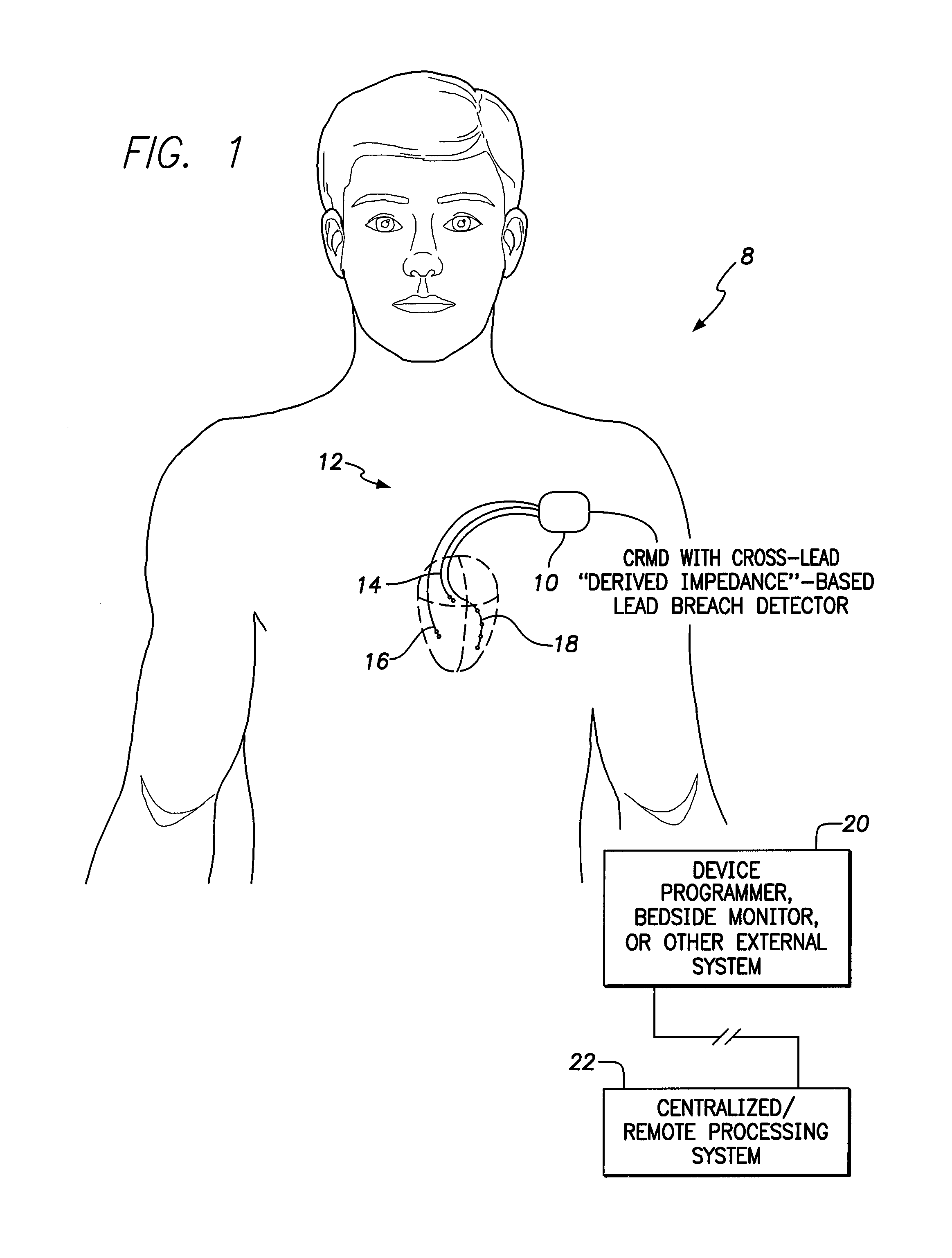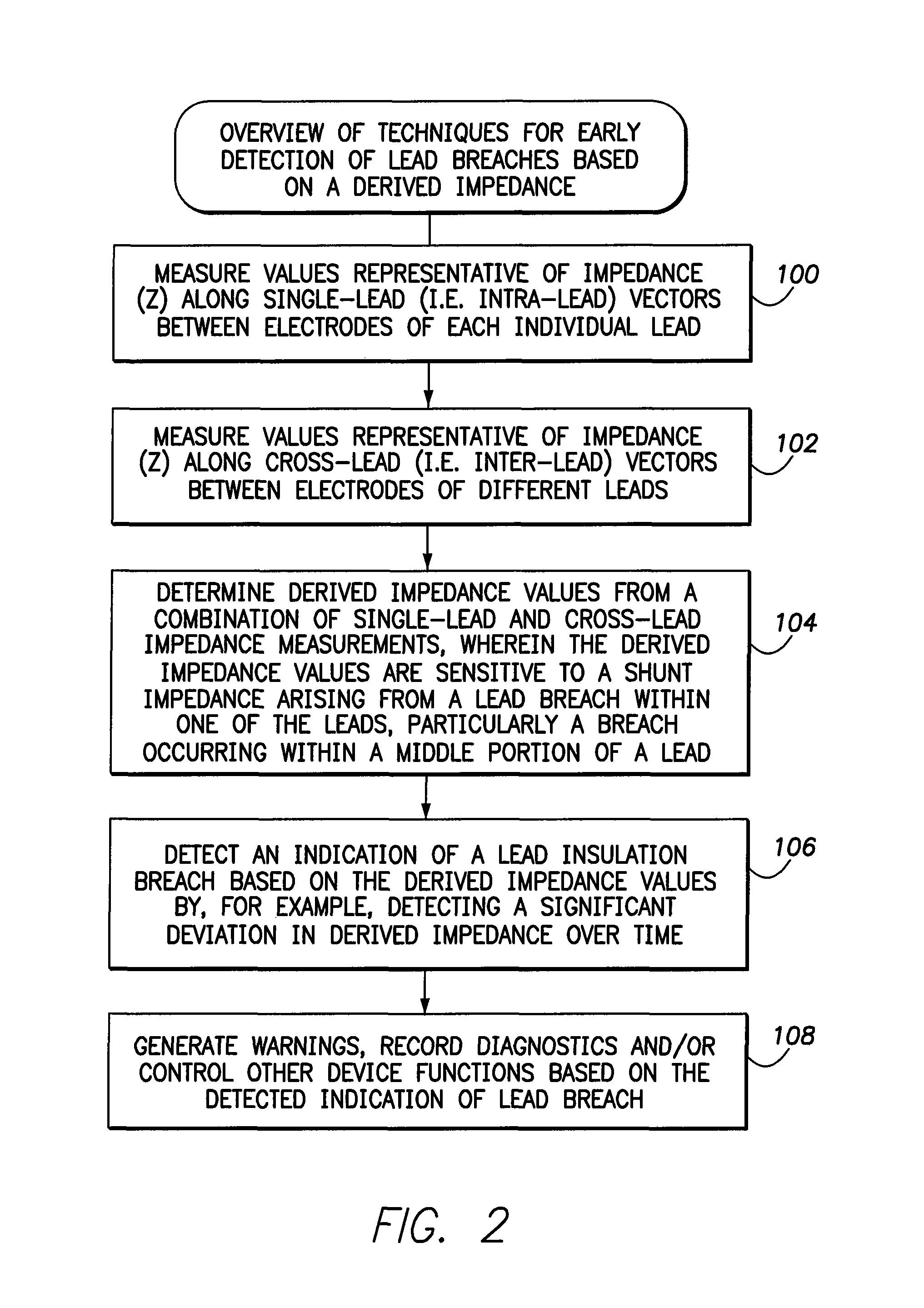Systems and methods for early detection of lead breaches using cross-lead impedances detected by an implantable medical device
a technology of cross-lead impedance and lead impedance, which is applied in the direction of therapy, heart stimulator, heart defibrillator, etc., can solve the problems of exposing the ring conductor to patient tissues, affecting the treatment effect, and affecting the patient's comfor
- Summary
- Abstract
- Description
- Claims
- Application Information
AI Technical Summary
Benefits of technology
Problems solved by technology
Method used
Image
Examples
Embodiment Construction
[0016]The following description includes the best mode presently contemplated for practicing the invention. This description is not to be taken in a limiting sense but is made merely to describe general principles of the invention. The scope of the invention should be ascertained with reference to the issued claims. In the description of the invention that follows, like numerals or reference designators will be used to refer to like parts or elements throughout.
Overview of Implantable Medical System
[0017]FIG. 1 illustrates an implantable medical system 8 capable of early detection of a lead breach based on derived impedance values obtained, at least in part, from cross-lead impedance measurements. That is, the CRMD is equipped with a cross-lead “derived impedance”-based lead breach detector. In the particular example of FIG. 1, implantable system 8 includes a CRMD 10 equipped with a set of leads 12 implanted on or within the heart of the patient, including a bipolar RA lead 14, a bi...
PUM
 Login to View More
Login to View More Abstract
Description
Claims
Application Information
 Login to View More
Login to View More - R&D
- Intellectual Property
- Life Sciences
- Materials
- Tech Scout
- Unparalleled Data Quality
- Higher Quality Content
- 60% Fewer Hallucinations
Browse by: Latest US Patents, China's latest patents, Technical Efficacy Thesaurus, Application Domain, Technology Topic, Popular Technical Reports.
© 2025 PatSnap. All rights reserved.Legal|Privacy policy|Modern Slavery Act Transparency Statement|Sitemap|About US| Contact US: help@patsnap.com



